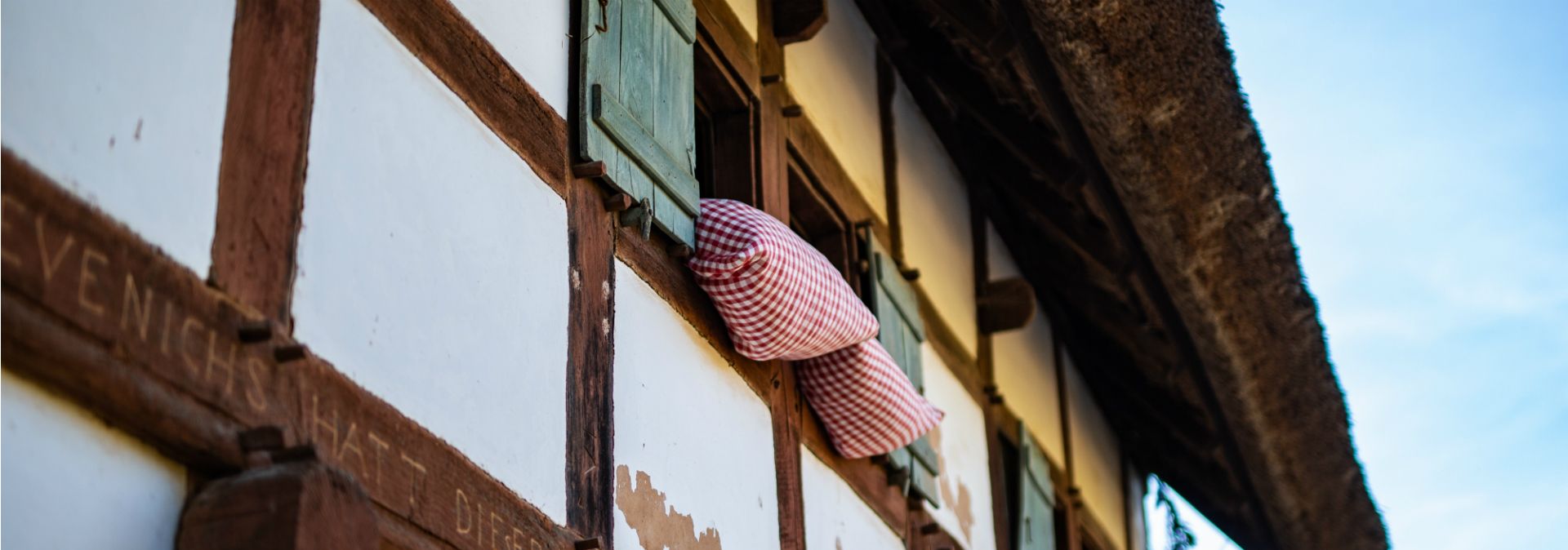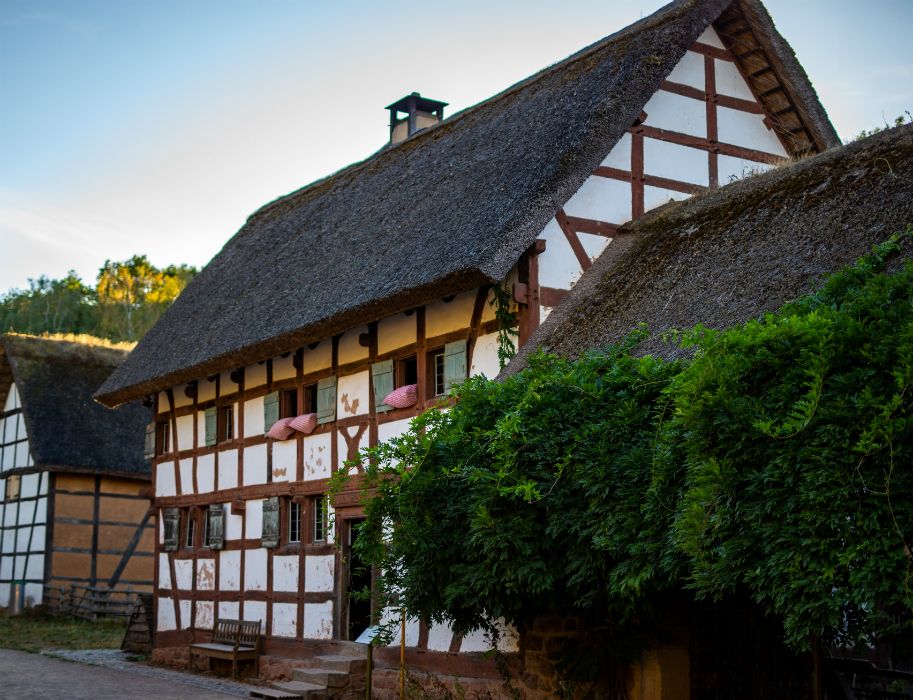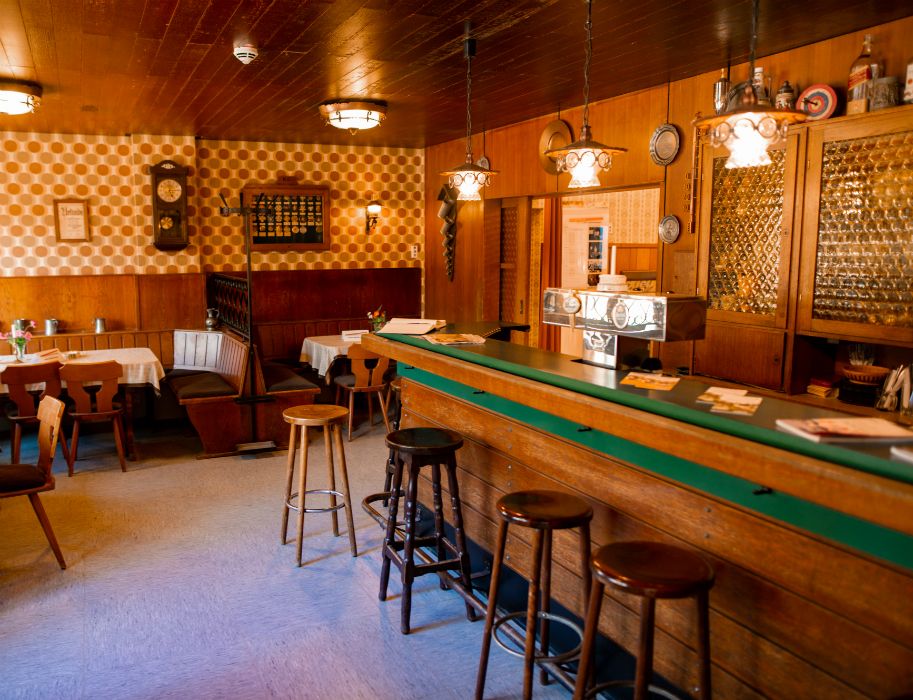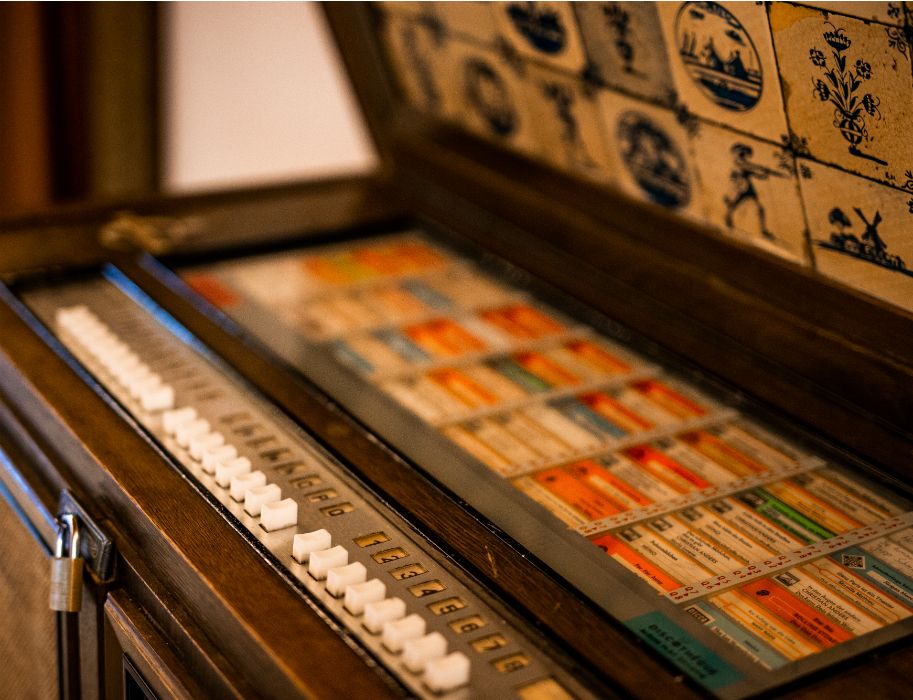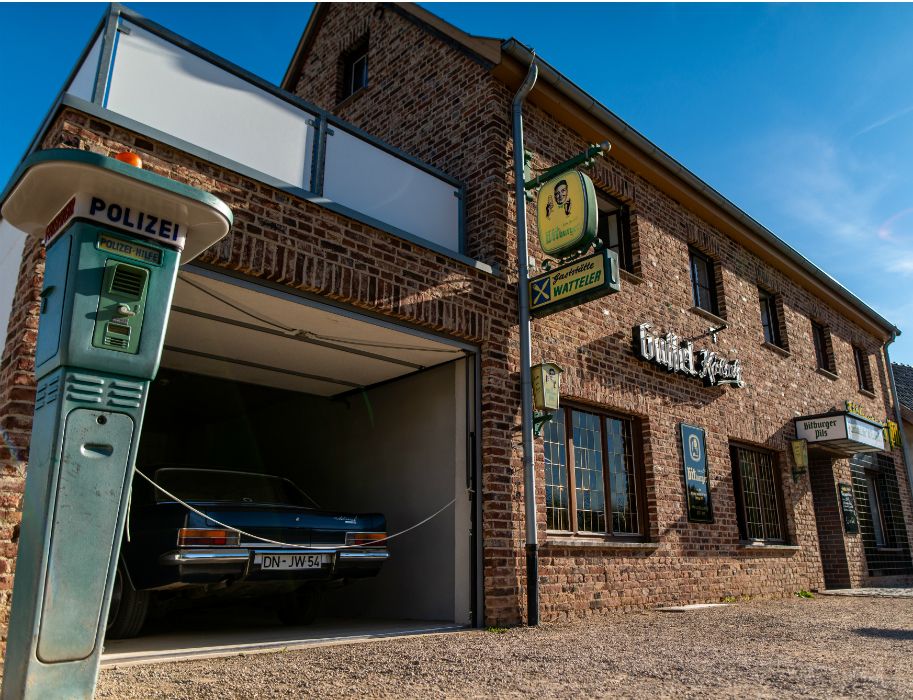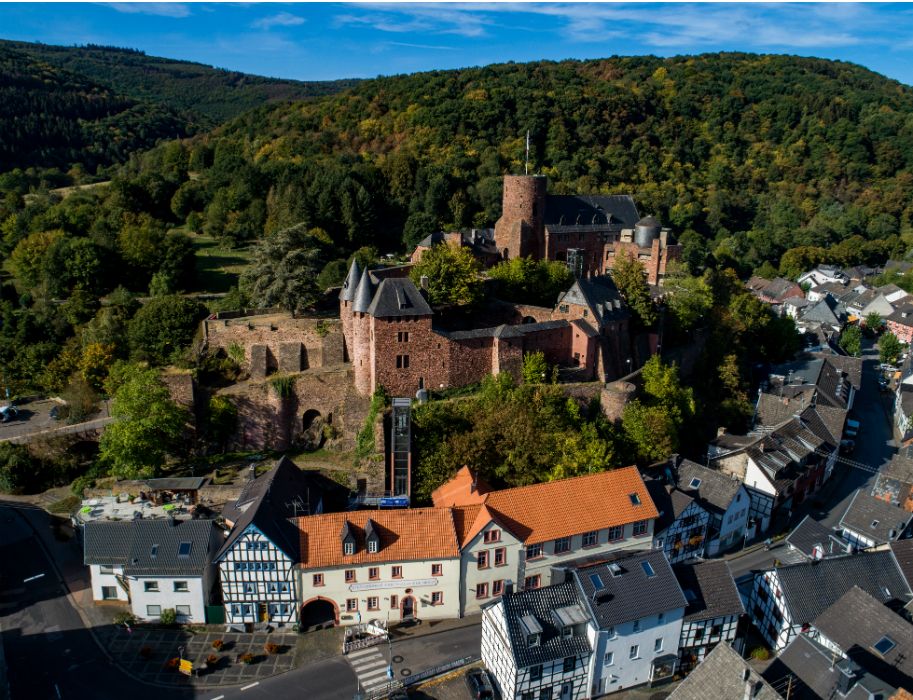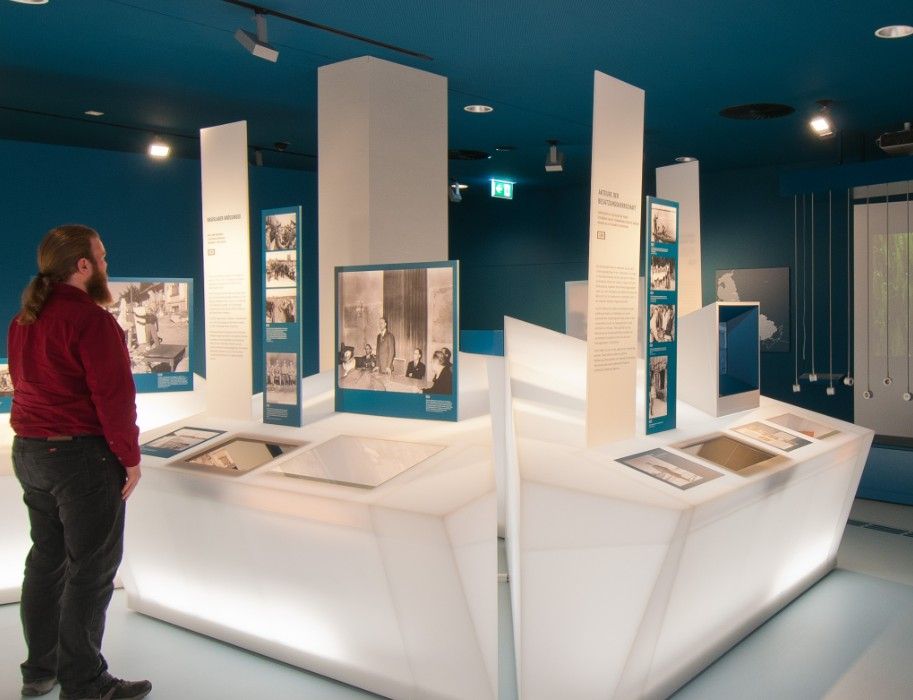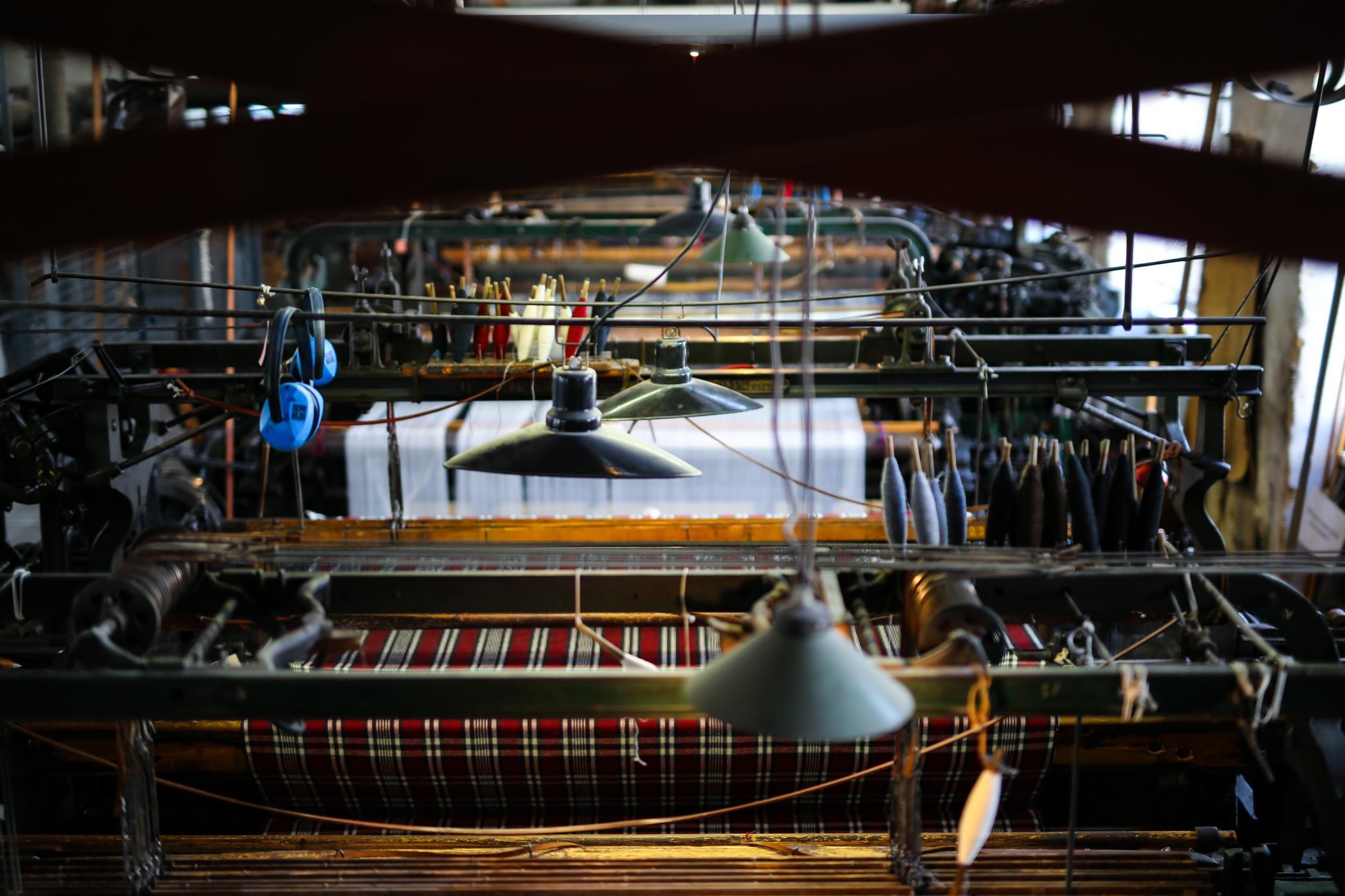Travel 500 years back in time at the LVR open-air museum in Kommern in the Eifel region. One of the largest museums of its kind in Europe takes visitors right into the world of our ancestors. In 75 historic buildings, including farms, workshops, windmills and watermills, you can experience at first hand how people once lived and worked in the Rhineland.
It is as if time has stood still. The smell of freshly baked bread fills the air. Geese and chickens run excitedly over the cobblestones. Mousetrap monger Regine "Jien" Braconnier loudly advertises her wares. From the smithy comes the loud clanging of the hammer on the anvil. Welcome to the past. Welcome to the Kommern open-air museum.
Smoke houses and half-timbered buildings
Throughout the year, visitors can gain an insight into village life in the former Prussian Rhine Province. Various projects and activity days offer the opportunity to get involved yourself. A total of 75 historic houses and stables were dismantled in the Rhineland and rebuilt on the 100-hectare museum site. Simple smoke houses without flues, as were typical in the Westerwald in the 16th century. Half-timbered buildings from the northern Eifel. But also farms and stables where people in the Lower Rhine and Bergisch regions lived with pigs, horses and chickens under one roof.
While strolling through the villages and hamlets, fields and orchards, visitors also meet "real" people from the past, such as the nun Clara Fey, who once cared for poor, abandoned children, or the farmer's wife Anna Ippendorf. At regular events such as "After the harvest", "Krautwischtag" or "Advent for all the senses", she tells vivid stories of cooking on an open fire, spinning on a spinning wheel and laborious gardening.
It is only a few steps from everyday village life to the more recent past. In the narrow streets of the small town of Rhenania, visitors walk through time from the French occupation to the German Empire and the post-war period. From here, they reach the Rhineland marketplace, which brings the 1950s to 1990s back to life. Some visitors will still remember it. For example, the prefabricated house from the Quelle catalog, the first bungalows and the emergency call pillar, also known as the "Eiserner Schutzmann". But there is also an old air raid shelter, Nissen huts, which served as accommodation for numerous bombed-out families, and a temporary home for refugees, a container built in 1991. A special highlight is the "Zeitblende", which recreates the feeling of 50 years ago against a suitable backdrop. Visitors are invited to immerse themselves in their own personal memories and relive their own past.
